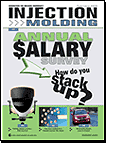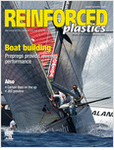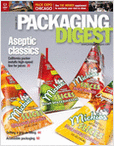Plastic Types, Characteristics and ... Dangers!!!
Tuesday, June 30, 2009
Individuals have a way to identify the type of plastic in many products, especially food storage containers and packaging [Check out the video below... interesting]. Many, but not all, such plastic products have a number – the resin identification code – molded, formed or imprinted in or on the container, often on the bottom. This system of coding was developed in 1988 by the U.S. - based Society of the Plastics Industry to facilitate the recycling of post-consumer plastics. It is voluntary for plastic manufacturers, but has become relatively standard on certain plastic products sold globally. Knowing the code for a particular product, consumers can then inform themselves of the characteristics of the plastic and the risks of using that product.
The seven plastic resin codes are each briefly described below to provide a quick snapshot detailing the name of the resin (i.e., the base material of the plastic), typical products it is found in, dangerous chemicals it leaches, and why they are dangerous.Polyethylene terephthalate (PET or PETE) – Used in soft drink, juice, water, beer, mouthwash, peanut butter, salad dressing, detergent and cleaner containers. Leaches antimony trioxide and di(2ethylhexyl) pthalate (DEHP). Workers exposed to antimony
 trioxide for long periods of time have exhibited respiratory and skin irritation; among female workers, increased incidence of menstrual problems and miscarriage; their children exhibited slower development in the first twelve months of life. The longer a liquid is left in such a container the greater the concentration of antimony released into the liquid. DEHP is an endocrine disruptor that mimics the female hormone estrogen. It has been strongly linked to asthma and allergies in children. It may cause certain types of cancer, and it has been linked to negative effects on the liver, kidney, spleen, bone formation and body weight. In Europe, DEHP has been banned since 1999 from use in plastic toys for children under the age of three.
trioxide for long periods of time have exhibited respiratory and skin irritation; among female workers, increased incidence of menstrual problems and miscarriage; their children exhibited slower development in the first twelve months of life. The longer a liquid is left in such a container the greater the concentration of antimony released into the liquid. DEHP is an endocrine disruptor that mimics the female hormone estrogen. It has been strongly linked to asthma and allergies in children. It may cause certain types of cancer, and it has been linked to negative effects on the liver, kidney, spleen, bone formation and body weight. In Europe, DEHP has been banned since 1999 from use in plastic toys for children under the age of three.
Check out the video below to learn how plastic bottles are made from Polyethylene terephthalate - interesting stuff!!!

 bottles, cooking oil and peanut butter jars, detergent and window cleaner bottles, shower curtains, medical tubing, and numerous construction products (e.g., pipes, siding). PVC has been described as one of the most hazardous consumer products ever created. Leaches di(2-ethylhexyl) phthalate (DEHP) or butyl benzyl phthalate (BBzP), depending on which is used as the plasticizer or softener (usually DEHP). DEHP and BBzP are endocrine disruptors mimicking the female hormone estrogen; have been strongly linked to asthma and allergic symptoms in children; may cause certain types of cancer; linked to negative effects on the liver, kidney, spleen, bone formation and body weight. In Europe, DEHP and BBzP and other dangerous pthalates have been banned from use in plastic toys for children under three since 1999. Not so elsewhere, including Canada and the United States.
bottles, cooking oil and peanut butter jars, detergent and window cleaner bottles, shower curtains, medical tubing, and numerous construction products (e.g., pipes, siding). PVC has been described as one of the most hazardous consumer products ever created. Leaches di(2-ethylhexyl) phthalate (DEHP) or butyl benzyl phthalate (BBzP), depending on which is used as the plasticizer or softener (usually DEHP). DEHP and BBzP are endocrine disruptors mimicking the female hormone estrogen; have been strongly linked to asthma and allergic symptoms in children; may cause certain types of cancer; linked to negative effects on the liver, kidney, spleen, bone formation and body weight. In Europe, DEHP and BBzP and other dangerous pthalates have been banned from use in plastic toys for children under three since 1999. Not so elsewhere, including Canada and the United States.



 Important Note : Two other types of plastic that fall under code 7 are acrylonitrile styrene (AS) or styrene acrylonitrile (SAN), and acrylonitrile butadiene styrene (ABS). Both AS/SAN and ABS are higher quality plastics with increased strength, rigidity, toughness and temperature and chemical resistance. AS/SAN is used in mixing bowls, thermos casing, dishes, cutlery, coffee filters, toothbrushes, outer covers (printers, calculators, lamps), battery housing. The incorporation of butadiene during the manufacture of AS/SAN, produces ABS,
Important Note : Two other types of plastic that fall under code 7 are acrylonitrile styrene (AS) or styrene acrylonitrile (SAN), and acrylonitrile butadiene styrene (ABS). Both AS/SAN and ABS are higher quality plastics with increased strength, rigidity, toughness and temperature and chemical resistance. AS/SAN is used in mixing bowls, thermos casing, dishes, cutlery, coffee filters, toothbrushes, outer covers (printers, calculators, lamps), battery housing. The incorporation of butadiene during the manufacture of AS/SAN, produces ABS,  which is an even tougher plastic. ABS is used in LEGO toys, pipes, golf club heads, automotive parts, protective head gear. Our research on risks associated with AS/SAN and ABS is ongoing.
which is an even tougher plastic. ABS is used in LEGO toys, pipes, golf club heads, automotive parts, protective head gear. Our research on risks associated with AS/SAN and ABS is ongoing.WHAT THIS MEANS FOR YOUR EVERYDAY PLASTIC USE : You may wish to seriously consider your – and especially your children's – use of plastics numbered 1, 3, 6 and 7 (polycarbonate), all of which have been shown to leach dangerous chemicals. This does not necessarily mean the others are completely safe, just that they have been studied less to date.

So if you have to use plastic, it is safest to stick to numbers 2, 4, 5 and 7 (other than polycarbonate) whenever possible.
If an item does not have a plastic code on it, or if the type of plastic is unclear from the code (e.g., with #7, it likely will not say it is polycarbonate), your best bet is to contact the manufacturer and ask them directly what type of plastic was used to make the product.
Plastic Tips
Here are some simple tips to help you in working toward a life without plastic, or a life of safer, more informed plastic use.
o Avoid polycarbonate (#7) baby bottles and sippy cups. For baby bottles, try and use glass, polyethylene or polypropylene instead. Sippy cups made of stainless steel (e.g., Kleen Kanteen, Purica), or of polypropylene or polyethylene are safer. Be sure to check the bottle or cup to be sure of the type of plastic it contains. As for baby bottle nipples, try and use silicone which does not leach the carcinogenic nitrosamines that can be found in latex.
o If you must use polycarbonate (#7) bottles, avoid heating food and drink in the bottle. Heat it in a separate container and transfer it to the bottle once it is warm enough for the child to eat or drink. If the plastic is showing signs of wear – scratched, cloudy – discard the container.
o For drinking water, try and avoid plastic bottles. If you do use plastic bottles made from #1 or #2 plastic try not to reuse them as they are intended only for single use. One alternative is a stainless steel water bottle. For storing large quantities of water, glass and stainless steel containers are also available. If you use a #1 water bottle, try to consume the contents as soon as possible because leaching of antimony increases with time.
o Try to avoid heating foods in plastic containers, especially in the microwave oven, which can cause the plastic to degrade and leach chemicals faster. As well, leaching increases when plastic comes into contact with oily or fatty foods, or when the plastic is scratched, worn, cracked, or sticky.
o Use plastic wraps with caution, especially in the microwave, and try to keep the plastic from touching the food. Alternatives include wax paper or paper towels.

o Try and use alternatives to plastic packaging and storage containers. Cloth, paper or cardboard are possibilities for transporting groceries. Stainless steel and glass food storage containers are available.
o Avoid plastic dishes and utensils for meals. Alternatives include glass, ceramic, wood, stainless steel, and lacquer ware. Offer your child or grandchild a non-plastic dish set made of either stainless steel or wood (safely coated with a non-toxic lacquer).
These days, plastic is so omnipresent it can be difficult to imagine life without plastic. Yet, our ancestors managed just fine without it. All it takes is a little imagination, determination and discipline.
p/s: This article is adopted from a colleague who shared this information in my work mailing list. I'm not sure where the information originates. However, I felt that the article is very informative and should be spread. I searched for some related photos to provide better comprehension and visualization to the reader. Hope you like it. I hope it is beneficial to everybody.
...........................................................................................................................................................
Recommended: Free Technical / Engineering Magazine.
Join Chemical Engineer Rocks FACEBOOK Group...
Labels: Health, Learning Curve, Review
posted by Kipas Repair JB @ 8:28 PM,
![]()
2 Comments:
- At Thursday, July 09, 2009, Vanessa Granville, representing the Styrene Information and Research Center said...
-
For more than 20 years, the Styrene Information and Research Center (SIRC) has sponsored a comprehensive research program to better understand the potential, if any, for styrene to affect human health. Styrene occurs naturally in the environment and most people are exposed to trace amounts that may be present in the air, or that occur in food such as cinnamon, beef, and strawberries. Both foam and solid polystyrene foodservice products have been tested extensively and deemed safe for consumer use by reputable government agencies. Since the 1990s, the polystyrene industry has conducted tests to measure the migration of styrene from food-contact styrenic plastics; the results have shown that these very low styrene levels pose no health concern. Specifically, the tests showed that the estimated daily exposure to styrene from polystyrene food-contact articles was 10,000 times safer than it needed to be.
Styrene has never been classified as an endocrine disruptor, as there is no scientific evidence whatsoever that it can cause reproductive or developmental problems. While long-term exposure to very high levels of styrene in the air - as may occur occasionally in some workplaces where styrene is handled - may cause headaches or symptoms of fatigue or dizziness, the general public typically is not exposed to such levels and have no cause for concern. The results of extensive studies of workers in styrene-related industries collectively show that exposure to styrene does not increase the risk of cancer, and to date, no regulatory agency has classified styrene as a known human carcinogen.
For more information regarding the safety of styrene products, please refer to the Styrene Information and Research Center Website at http://www.styrene.org/. - At Monday, July 20, 2009, Loves Desserts said...
-
Very informative article. Some of us take it for granted the dangers of the things we use in our everyday life. For feeding bottles for babies there are alternatives that is available in the market. Try Green-to-Grow feeding bottles from www.treehuggersbabies.com
The Author

I’m Zaki. I used to be a project, process and chemical engineer. Few years ago I successfully became a Chartered Engineer (IChemE) and Professional Engineer (BEM). I'm now employed as a chemical engineering educator/researcher/consultant. Hope you like reading my blog. I welcome any feedback from you. My email: zaki.yz[alias]gmail.com. TQ!




